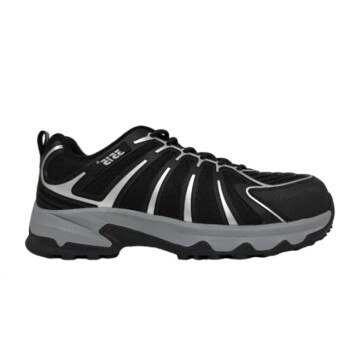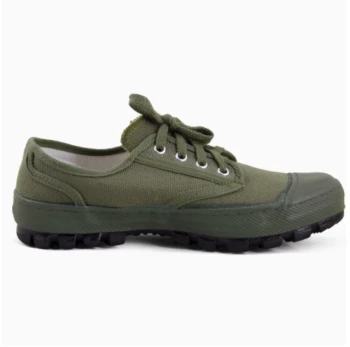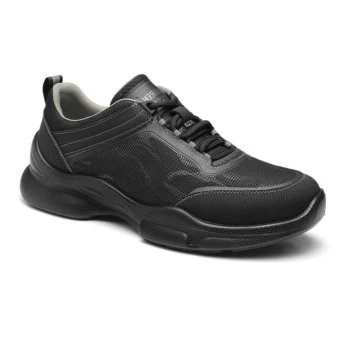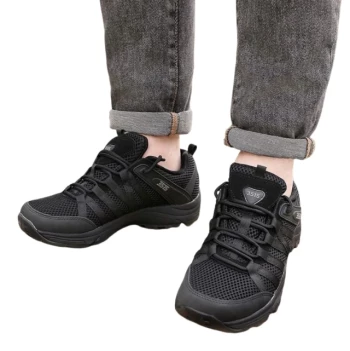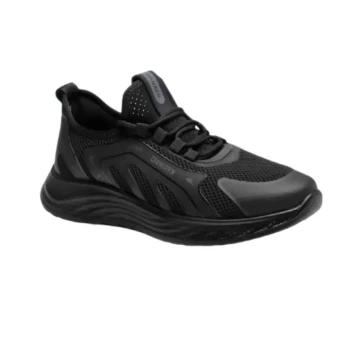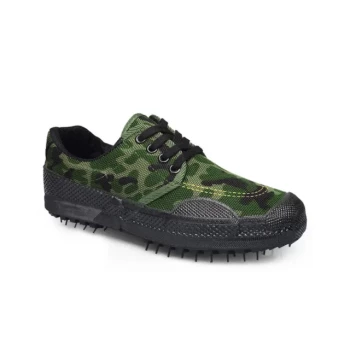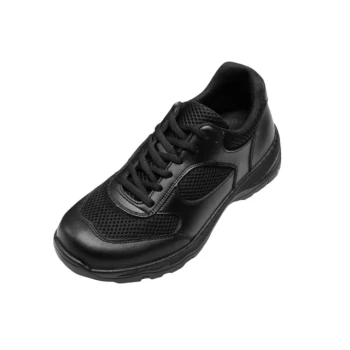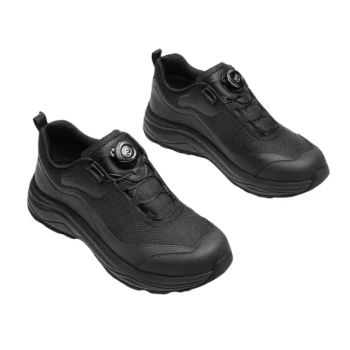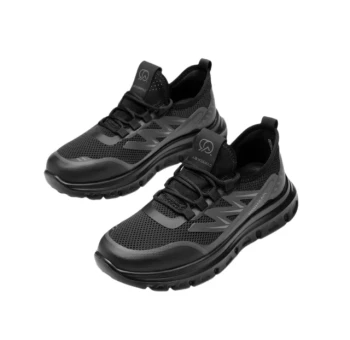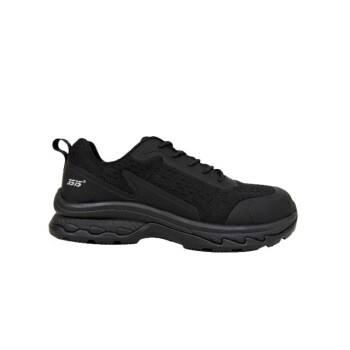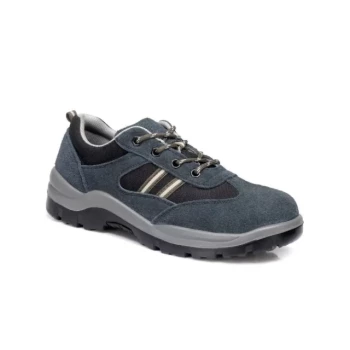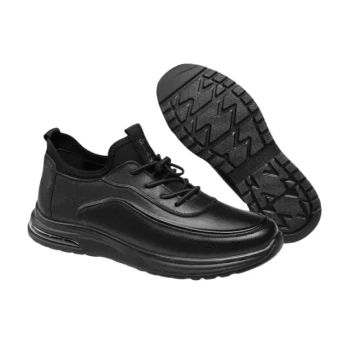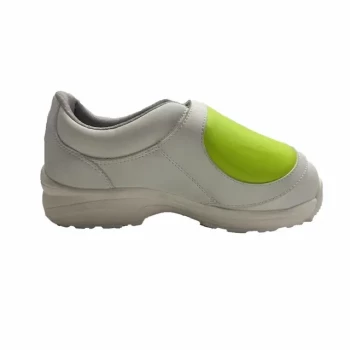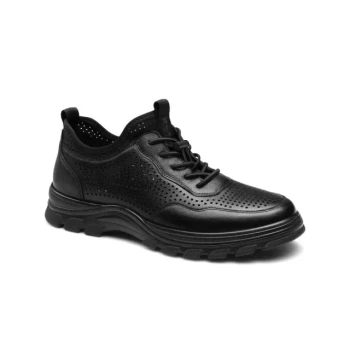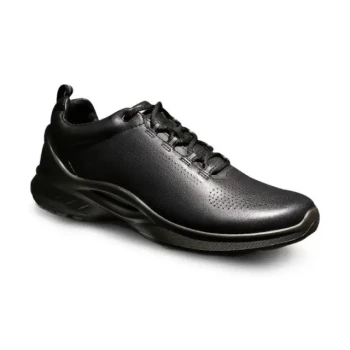In a direct comparison, both rubber and TPR (Thermoplastic Rubber) soles are highly water-resistant. The critical difference lies not in their ability to keep water out, but in their performance once the ground is wet. Rubber provides significantly better grip and traction on slippery surfaces, making it the superior choice for wet conditions.
The choice between rubber and TPR for water resistance is less about keeping your feet dry and more about keeping you upright. While both materials repel water, rubber’s superior grip on wet surfaces is its defining safety and performance advantage.
A Head-to-Head on Water Resistance
When evaluating footwear for wet environments, we must look at two factors: the material's ability to block water and its ability to maintain traction.
How Rubber Soles Handle Water
Rubber is a naturally waterproof material, forming an excellent barrier against moisture.
Its most important characteristic, however, is its high coefficient of friction. This allows it to maintain a powerful grip on wet, slippery surfaces like slick pavement or damp trails.
This makes rubber the gold standard for performance and safety in rainy or wet conditions.
How TPR Soles Handle Water
TPR is also inherently water-resistant and suitable for everyday footwear that may encounter rain or puddles.
While it effectively keeps water from soaking through, its grip is not as reliable as natural rubber's in extreme wet conditions.
TPR provides adequate traction for casual use but may feel less secure on very slick surfaces.
Beyond Water: Key Performance Differences
The decision between these materials extends beyond just their performance in rain. Understanding their core properties helps clarify which is right for your needs.
Grip and Traction
Rubber is the undisputed winner for grip. Its composition makes it ideal for boots, performance sneakers, and any footwear where reliable traction is a priority.
TPR offers a moderate level of grip that is sufficient for most daily activities but is not engineered for high-performance demands.
Durability and Longevity
Soles made from natural rubber are known for their exceptional durability and resistance to abrasion. They hold up well to heavy use over long periods.
TPR is less durable than rubber. While perfectly adequate for casual shoes, it will show wear more quickly, especially with frequent, demanding use.
Flexibility and Comfort
Rubber offers excellent flexibility, which contributes to overall comfort by allowing the foot to move naturally.
TPR is also flexible, but generally not to the same degree as rubber. It provides a decent range of movement for everyday wear.
Weight and Cost
This is where TPR has a distinct advantage. TPR is significantly lighter and more cost-effective to produce than rubber.
This makes it a popular choice for lightweight, affordable footwear where cutting-edge performance is not the primary goal.
Understanding the Trade-offs
Choosing a sole material is always a balance of performance, cost, and intended use. Neither option is universally "better"; they simply serve different purposes.
The Case for Rubber
Rubber is a premium material. Its superior grip, durability, and flexibility come at a higher cost and add more weight to the shoe. It is an investment in safety and long-term performance.
The Case for TPR
TPR represents a practical compromise. It offers good all-around performance, including water resistance and moderate flexibility, in a lightweight and affordable package. Its trade-off is in ultimate grip and resilience compared to rubber.
Making the Right Choice for Your Footwear
Your final decision should be guided by the primary purpose of your shoes.
- If your primary focus is maximum safety and performance in wet conditions: Choose rubber for its unparalleled grip and traction on slippery surfaces.
- If your primary focus is a lightweight and affordable shoe for general use: TPR provides excellent value with reliable water resistance for everyday scenarios.
- If your primary focus is long-term durability for heavy wear: Rubber's robust composition makes it the more resilient and lasting investment.
Ultimately, choosing the right sole is about aligning the material's strengths with your specific environmental demands.
Summary Table:
| Feature | Rubber Soles | TPR Soles |
|---|---|---|
| Water Resistance | Excellent barrier | Excellent barrier |
| Grip on Wet Surfaces | Superior traction | Moderate traction |
| Durability | High, long-lasting | Moderate, wears faster |
| Flexibility | Excellent | Good |
| Weight | Heavier | Lighter |
| Cost | Higher | More affordable |
Need the Right Sole for Your Footwear Line?
As a large-scale manufacturer, 3515 produces a comprehensive range of footwear for distributors, brand owners, and bulk clients. Whether your market demands the superior wet-surface grip of rubber soles or the cost-effective, lightweight performance of TPR, we have the production capabilities to deliver.
Let us help you make the perfect choice for your next project.
Contact our expert team today to discuss your specific needs and get a quote.
Related Products
- Durable Rubber-Soled Utility Shoes for Wholesale & Custom Brand Manufacturing
- Premium KPU Athletic Safety Shoes for Wholesale
- Durable Canvas Work Shoes with Rubber Lug Sole | Wholesale Manufacturer
- Wholesale Breathable Training Shoes Custom Athletic Footwear Manufacturer
- Lightweight Breathable Training Shoes for Wholesale & Custom OEM Manufacturing
People Also Ask
- What are the main applications of vulcanized rubber? Unlock Durability for Tires, Footwear & More
- Which type of sole is better for premium sneakers and why? The Definitive Guide to Rubber Outsoles
- What are rubber soled shoes? The Ultimate Guide to Durable, All-Weather Footwear
- What historical breakthrough in 1844 contributed to modern shoe sole manufacturing? The Vulcanization Revolution
- Why should we wear rubber soled shoes? Unlock Superior Safety and Durability

